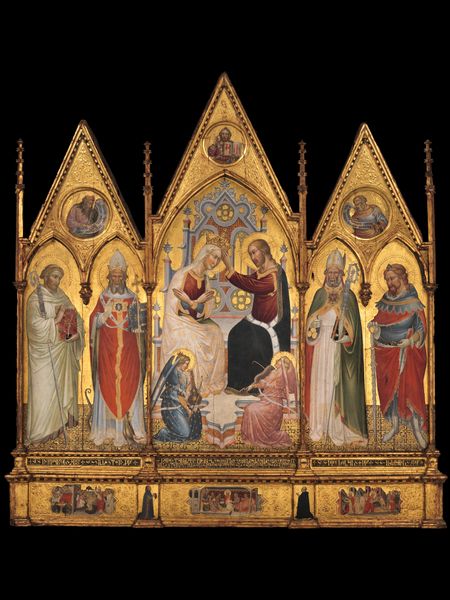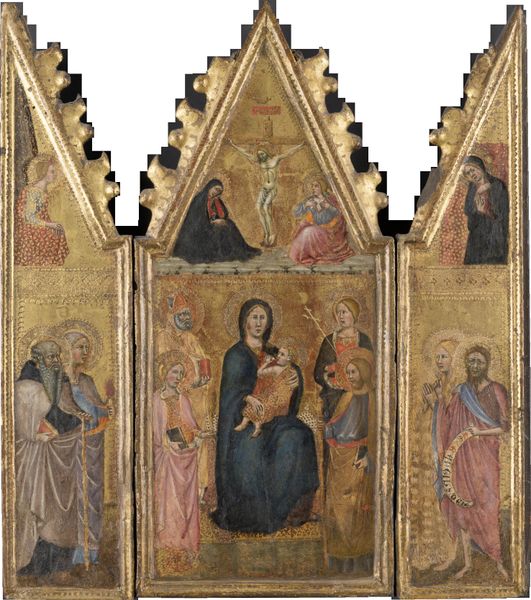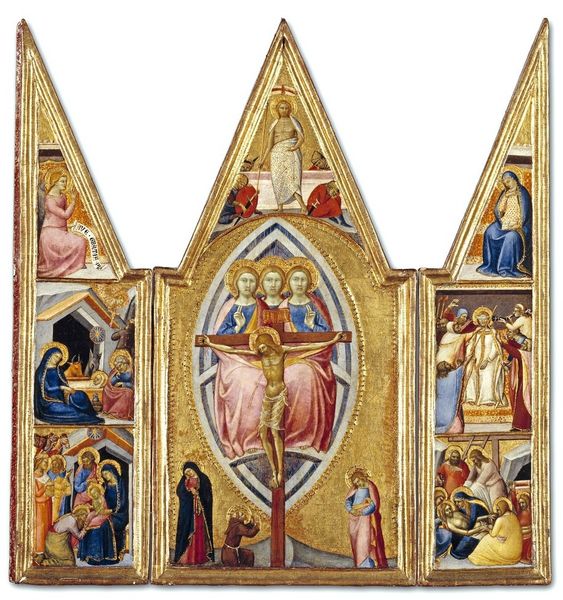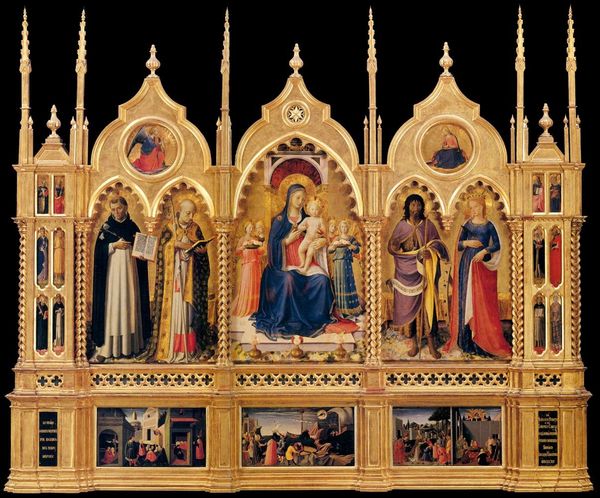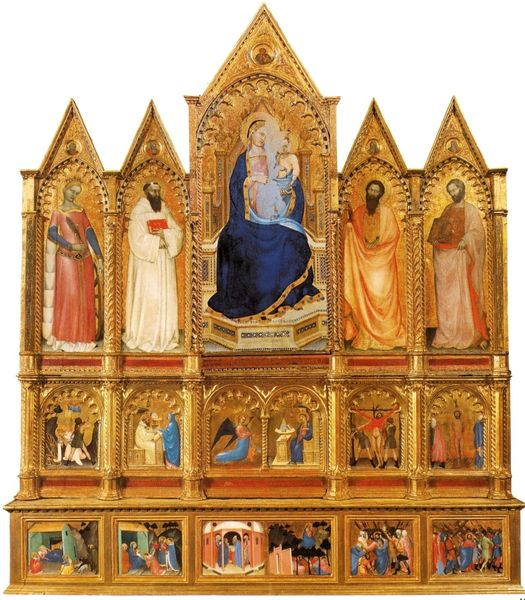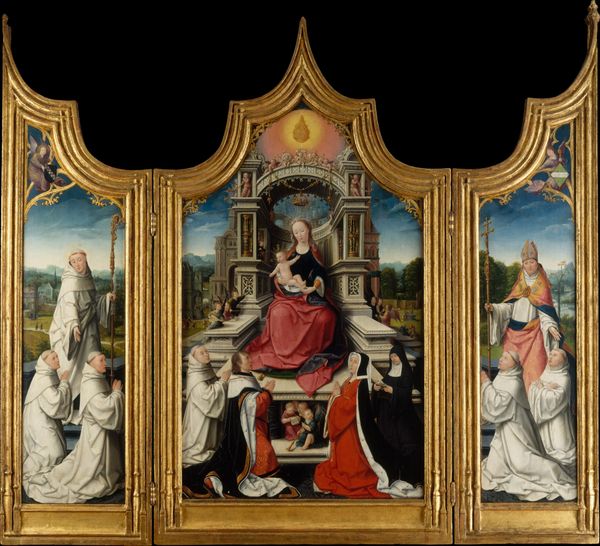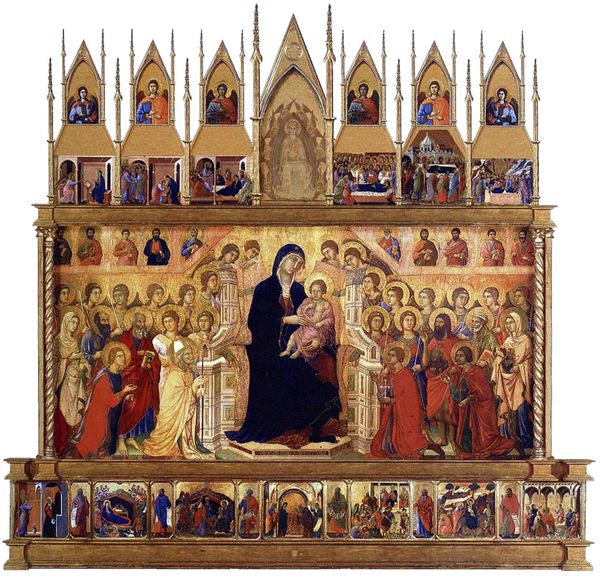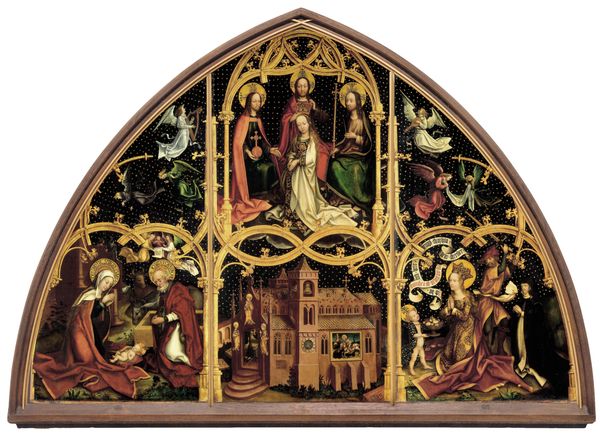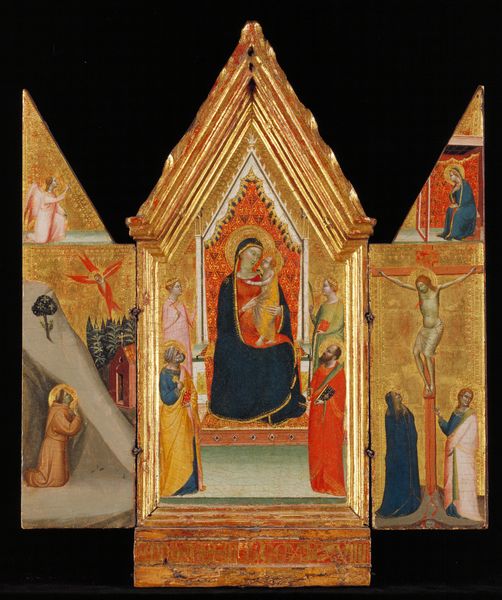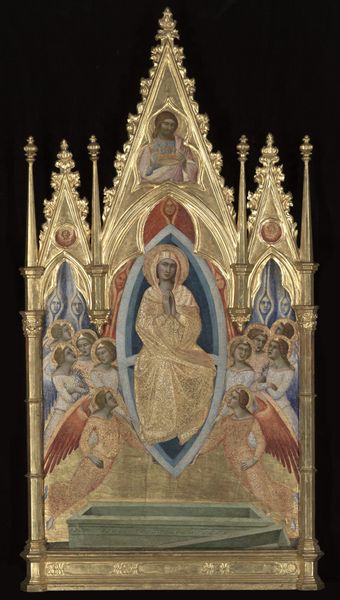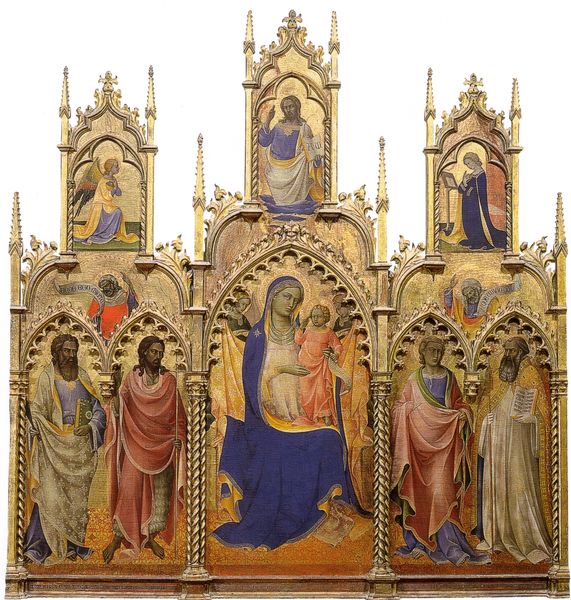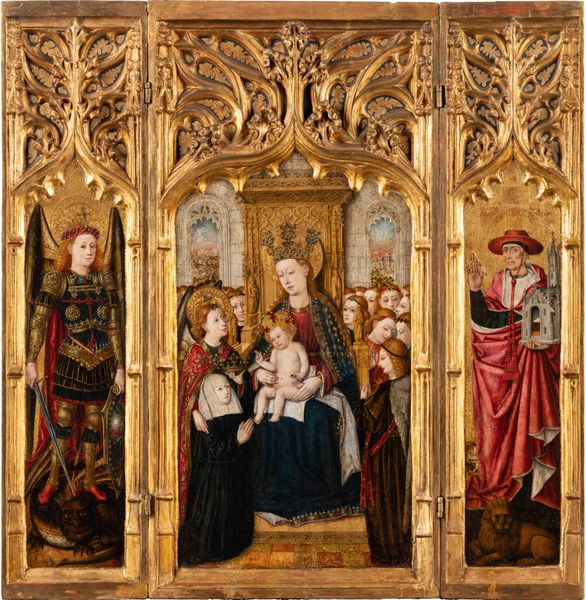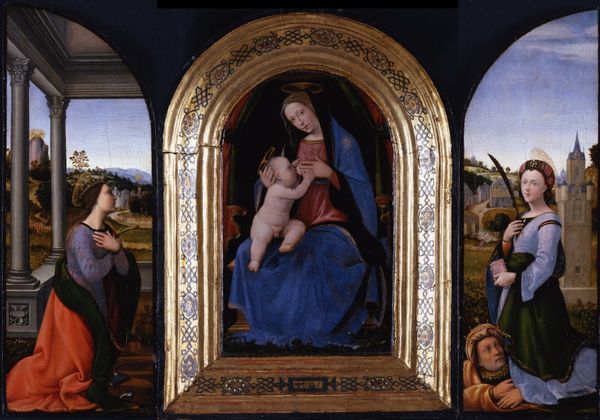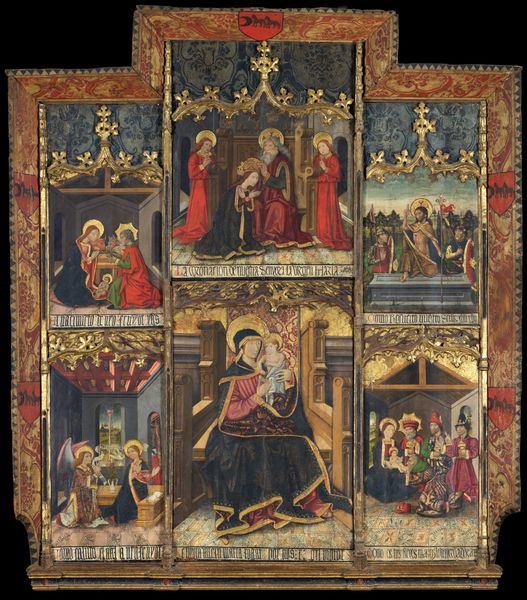
The Madonna of Humility, the Annunciation, the Nativity, and the Pietà 1462 - 1468
0:00
0:00
tempera, painting
#
medieval
#
narrative-art
#
tempera
#
painting
#
sculpture
#
figuration
#
historic architecture
#
traditional architecture
#
madonna
#
child
#
history-painting
#
italian-renaissance
#
early-renaissance
#
miniature
#
statue
Dimensions: Central panel, overall 23 x 18 in. (58.4 x 45.7 cm); left panel, overall 22 3/8 x 9 1/2 in. (56.8 x 24.1 cm); right panel, overall 22 1/4 x 9 3/8 in. (56.5 x 23.8 cm);
Copyright: Public Domain
Editor: Here we have Bartolomeo Vivarini’s tempera on panel from the 1460s, titled "The Madonna of Humility, the Annunciation, the Nativity, and the Pietà." It strikes me as a beautifully crafted piece, especially the gold leaf details. How do you see this work in relation to the art of its time? Curator: The altarpiece operates within a very specific socio-cultural framework. It was a time of growing patronage by wealthy families and religious institutions, each vying to showcase their power and piety. Look at how Vivarini uses the Madonna of Humility, not as a singular iconic image, but embedding her within scenes of the Annunciation, Nativity and Pietà. These would have resonated deeply with the public’s spiritual and emotional landscape. The work operates as a potent piece of visual propaganda, reinforcing religious values, and social hierarchy through art. What kind of devotional space do you think this artwork once occupied? Editor: I imagine this altarpiece standing at the front of the church, above the altar. Do you think that placement affected how it was interpreted? Curator: Undoubtedly. The sheer size, use of precious materials like gold, the elevated position within the sacred space: these would have all contributed to a sense of awe and reverence. Think about how the placement reinforced the church's authority as an intermediary between the divine and the congregation, especially within the specific function that religious images served within Medieval and early Renaissance societies. Editor: It is so interesting how a painting can say so much about power structures. It’s far more than just a pretty picture. Curator: Exactly. The piece reminds us that art is always embedded within broader historical currents. This has certainly enriched my understanding of the artwork's complexity.
Comments
No comments
Be the first to comment and join the conversation on the ultimate creative platform.
